F-100 Super Sabre
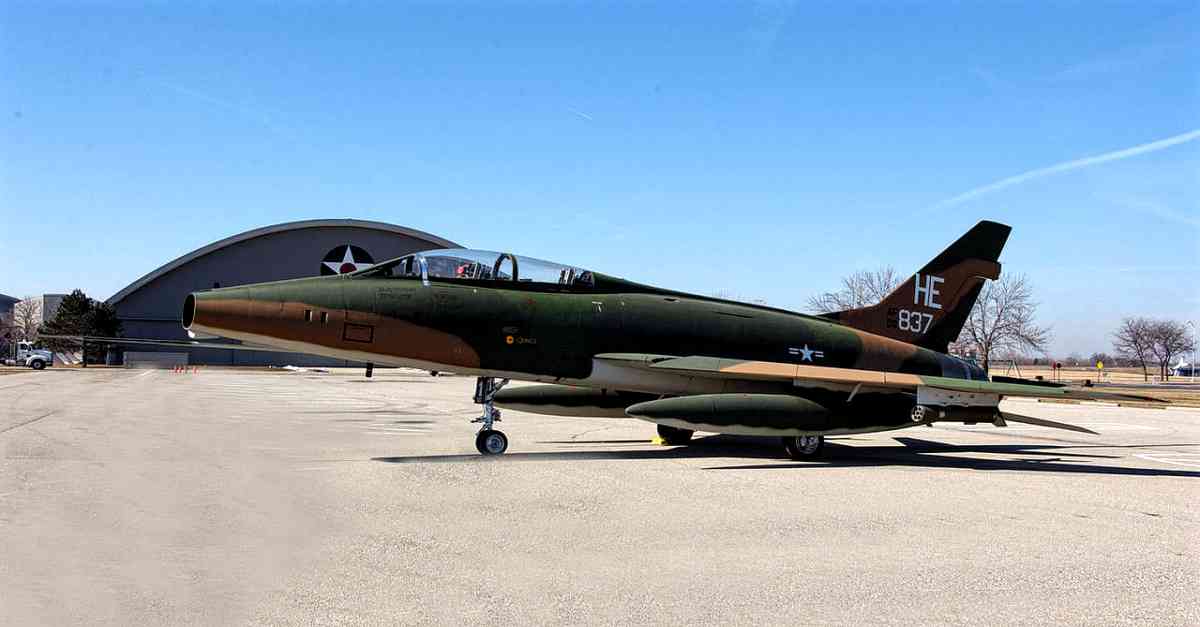
The F-100 Super Sabre was America’s answer to the future of air-to-air superiority in the mid-1950s. Equipped with a single Pratt Whitney J-57-P-21 turbojet, it would face off against the latest generation of Soviet MiGs over the Korean Peninsula and prevail as one of the fastest jets at an astounding success rate. This is an example of an American-made fighter jet built for speed and dog fighting. It would go on from Korea to the jungles of Vietnam where it became the first U.S. Air Force jet fighter to engage enemy aerial jets. The F-100s on that mission were escorting the F-105 Thunderchief, which would eventually take over for them. F-100s were lovingly referred to as “Huns”, a shortening of their full designation. They would go on to serve 25 years in the United States Air Force. This classic is one of the fastest fighter jet aircraft, and a great start to this list.
- Top Speed: 864 mph
- Max Flight Distance: 2,235 miles at 610 mph with internal fuel
F-101 Voodoo
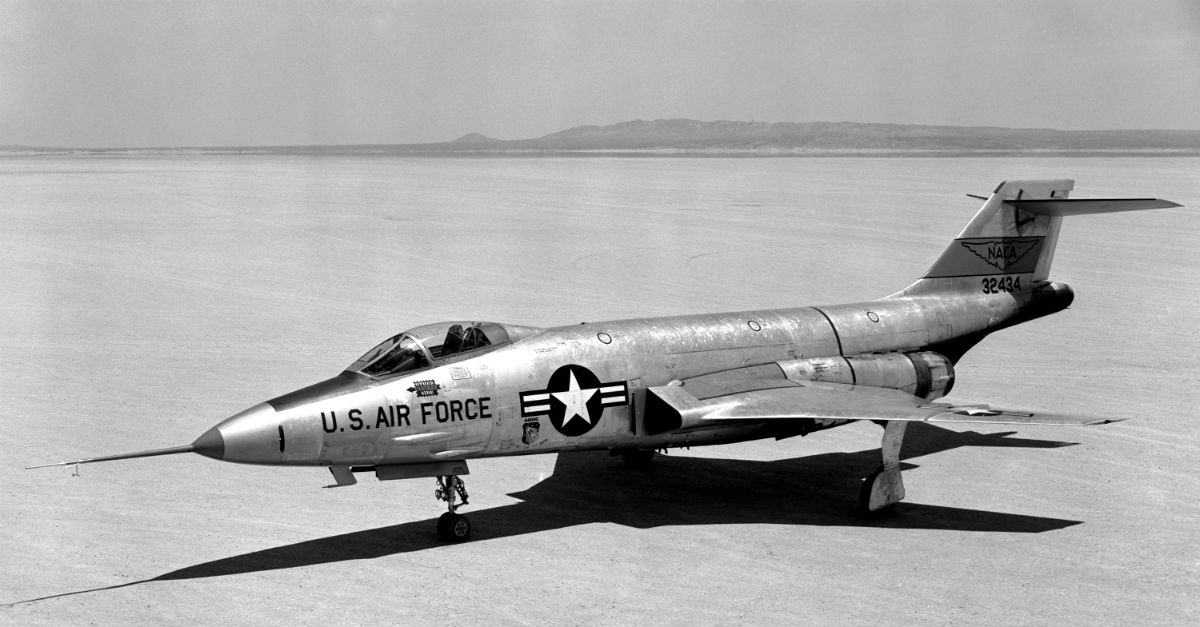
Someone has to protect the strategic air bombers as they move deep into enemy territory. That was the main thought when the United States Air Force and the Royal Canadian Air Force commissioned McDonnell-Douglas to build a supersonic long-range bomber escort jet. Thus the F-101 Voodoo was born. While the F-100 became the premier supersonic air-to-air fighter, the F-101 would undergo many transformations. The Air Force saw its potential grow from a long-range fighter escort to a strategic fighter-bomber. Pushed into the sky in 1957, the Voodoo immediately went on to set a world record for supersonic flight at a blistering 1,208 mph. The Voodoo would be called upon to serve everything from reconnaissance runs during the Cuban Missile Crisis to the war in Vietnam.
Because it was equipped with two Pratt Whitney J57-variant turbojets, the F-101 Voodoo could quickly accelerate past the speed of sound. This made it a hard target for MiGs patrolling the air across Northern Vietnam. Only one RF-101C was lost to air-to-air encounters, and its design influenced and accelerated the production of the F-4 Phantom. With a top speed of 1,134 mph, it didn’t take long for it to get to hot spots in Vietnam. But without additional external tanks or inflight refueling, it pretty much had to arrive at destination, drop its payload, and go home.
- Top Speed: 1,134 mph
- Max Flight Distance: 1,520 miles with internal fuel
F-35 Lightning II
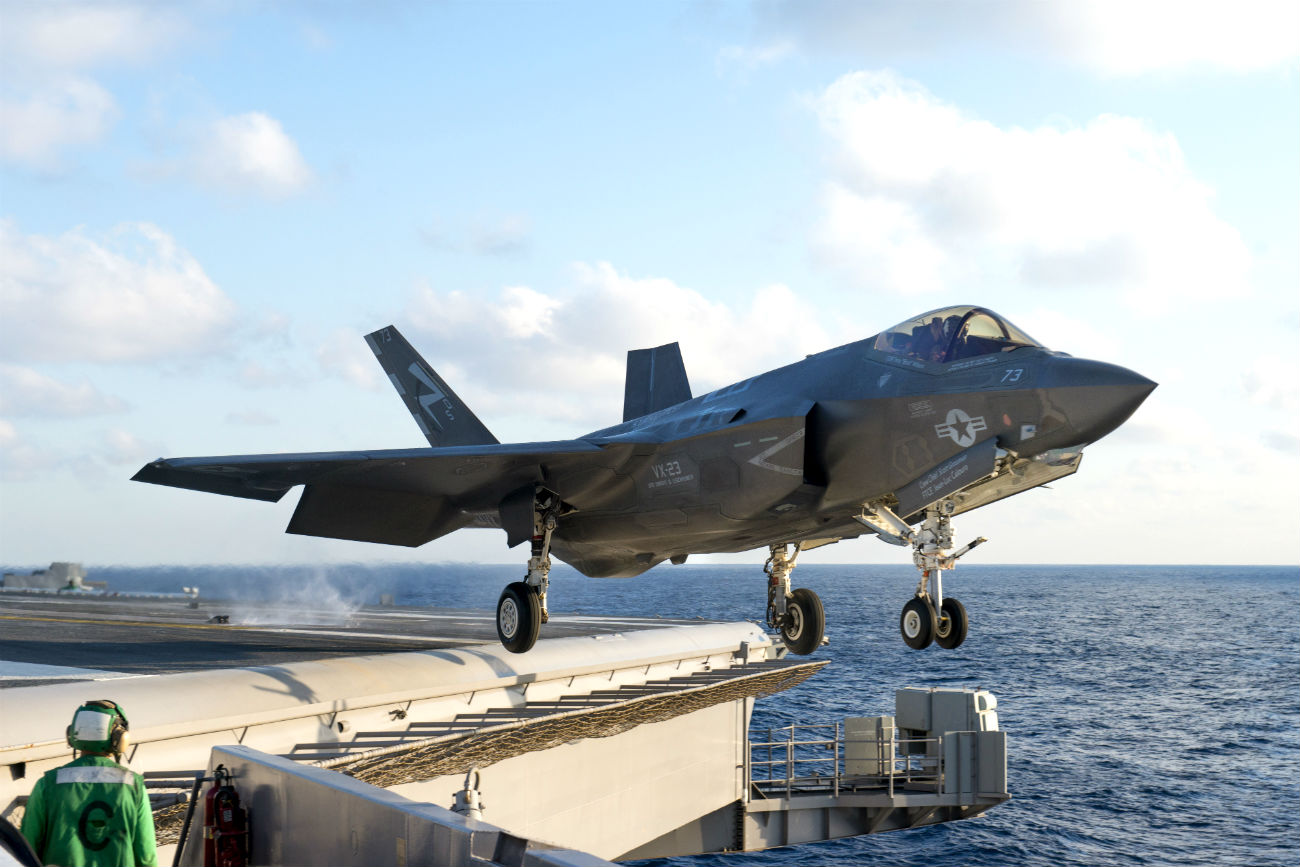
Hailed as America’s next gen wave of stealth multirole jet fighters, the F-35 Lightning II borrows its name from an older generation of fighter aircraft that served in WWII. The first wave of F-35s to hit the fleet went straight to the U.S. Marine Corps, where they came ready for extreme short take-offs and landings. This is one of the first aircraft to implement 720 degrees of vision to its pilots. This functionality is enabled through a system of sensors feeding straight to the pilot’s helmet. With a top speed of Mach 1.6, this single pilot jet fighter promises to bring high maneuverability matched with stunning versatility in mission parameters. The F-35 is fifth-generation and speed isn’t its purpose, yet it’s still a contender for fastest fighter jet.
-
- Top Speed: 1,200 mph
- Max Flight Distance: 1,381 miles on internal fuel
Farey Delta II

The British launched their first transonic jet in 1954 – moving faster than 1,000 mph for the first time in recorded history. However, this experimental aircraft was never meant to fight toe-to-toe with the big dog. It was designed purely to test the limits of what was available for transonic and supersonic flight. The Farey Delta II accomplished its mission, setting a world record for fastest flight. That record didn’t last long and only two of the Farey Delta IIs ever made it into the air. But they would hold a coveted place in British Aerospace history. The supersonic technology developed in creating the Delta IIs was later used to create the Concorde supersonic transport jet, which would push the envelope for moving passengers and cargo across the Atlantic.
- Top Speed: 1,300 mph
- Max Flight Distance: 830 miles with internal fuel
Sukhoi PAK FA T-50
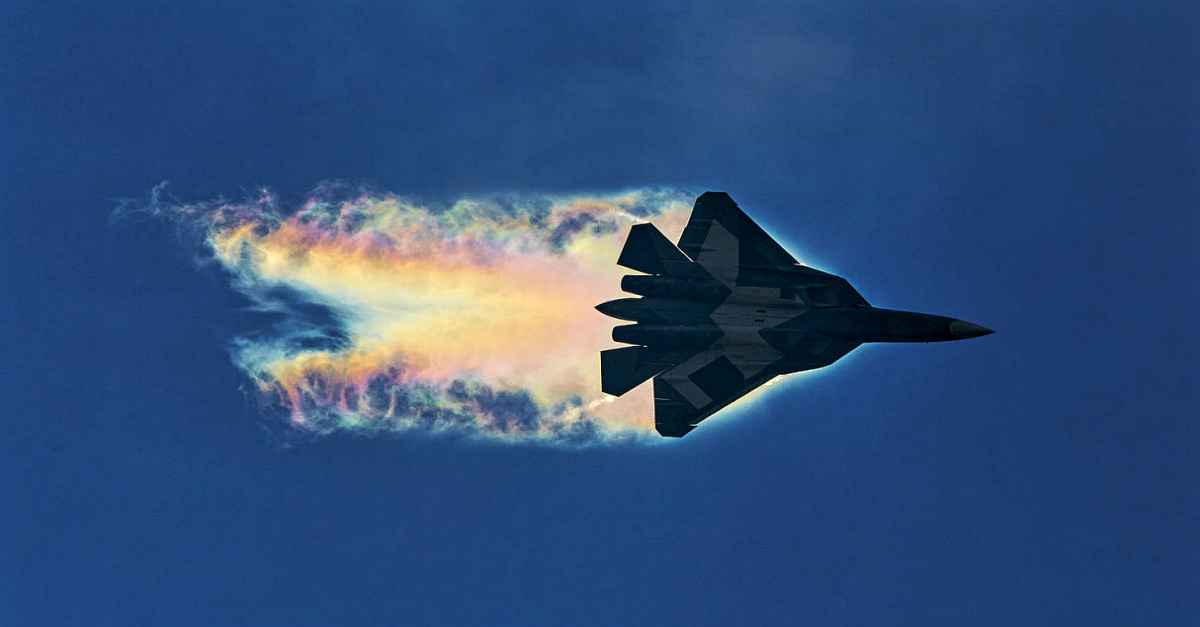
The United States isn’t alone in its development of next-gen, multi-role, stealth-capable jet fighters. Russia is currently producing its take on the future of aircraft to replace its aging fleet of Su-27s. Enter the Sukhoi PAK FA T-50. It’s designed to go toe-to-toe with the likes of the F-35 Lightning II. Even though the PAK FA T-50 is still in its final testing phases, it’s expected to roll out any day now. Once deployed, it has general flight characteristics that are similar or on-par with the fleet of next gen fighters being produced by NATO and its allies. With weapons testing still underway, it’s somewhat behind schedule in comparison to the F-35Bs, which already hit the fleet. But once finished, Russia is looking to Brazil and India to field some of its first variants.
- Top Speed: 1,320 mph
- Max Flight Distance: 2,175 miles with internal fuel
F-104 Starfighter
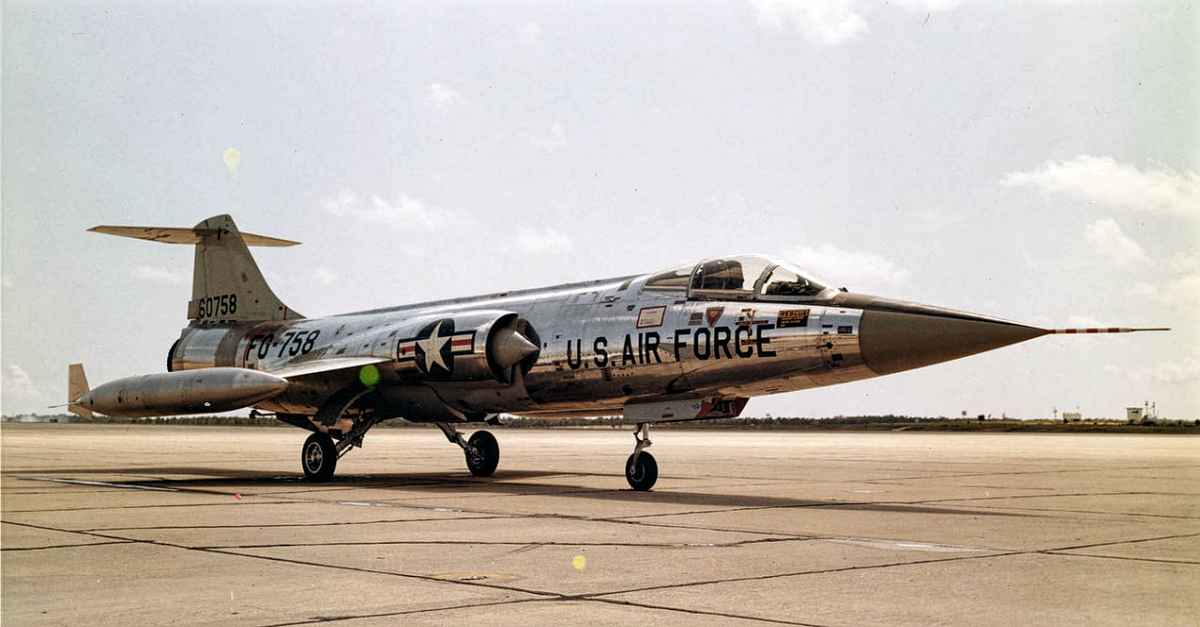
Lockheed-Martin’s F-104 Starfighter came during an era where faster was better. When every jet fighter coming off the assembly line was eyeballed for both air-to-air interception as well as strategic nuclear payload delivery, there had to be some sacrifices. In terms of speed, the F-104 Starfighter could not be beat when it first took to the skies in 1956. By 1958, it was scorching previous speed records with a blistering and sustained Mach 2+ speed of 1,404 mph.
Unfortunately it was developed in an age where Surface-to-Air missile technology was taking off. This resulted in sustained losses during their service in the Vietnam Conflict. Pilots gave it mixed reviews and it was subject to quite a number of internal investigations following safety and reliability concerns. But speed was never an issue for this Starfighter. The final F-104 Starfighter was retired in 2004 from the Italian Air Force, and its service would usher into the production of the F-4 Phantom.
- Top Speed: 1,328 mph
- Max Flight Distance: 1,630 miles with internal fuel
Dassault Mirage 2000D/N
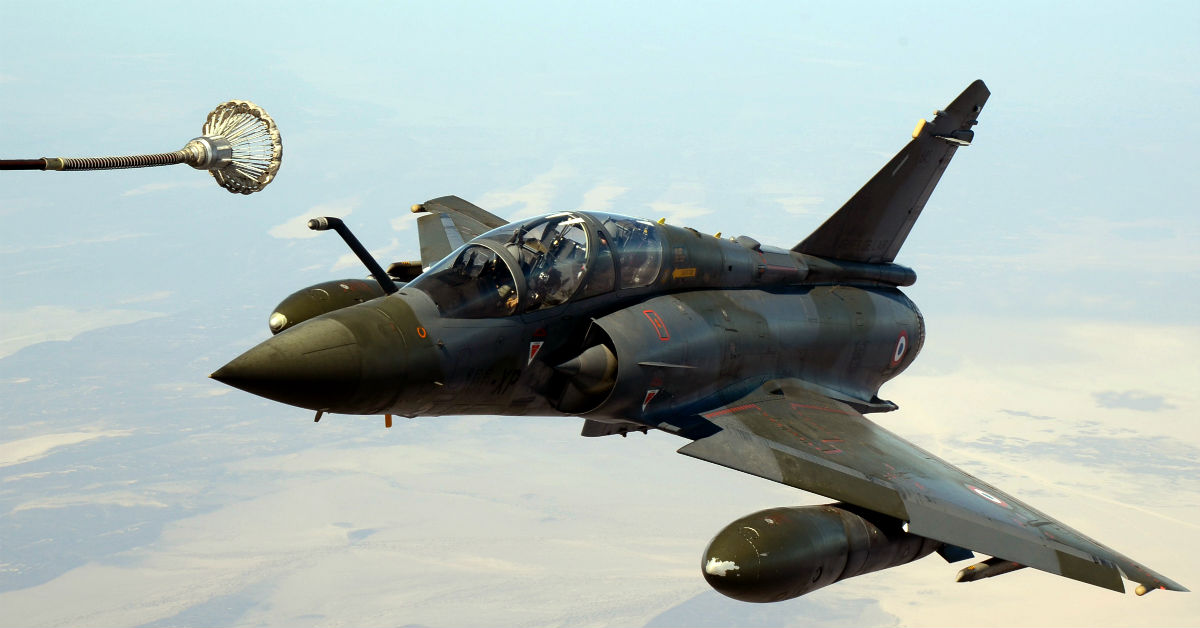
When France realized it needed a super fast attack jet to counter other nations’ air supremacy options, Dassault created the Mirage 2000N and 2000D. The Mirage 2000N was meant to be their fast attack nuclear option and the Mirage 2000D was intended for interdiction and engaging enemy air. By the time it hit the air in the early 1980s, the Mirage 2000 was less of a Cold War deterrent against Soviet MiGs and Sukhois and more of a fast attack aircraft for dropping precision ordinance at long-range distances. It could approach Mach 2 speeds while carrying a dizzying assortment of guided bombs and air-to-air missiles. The fastest fighter jet is yet to be revealed, but we just love this Dassault Mirage
- Top Speed: 1,453 mph
- Max Flight Distance: 920 miles on internal fuel
F-4 Phantom II

Two seats, two engines, and a notorious reputation for wrecking air records, the F-4 Phantom II is when the United States began to take a heavy interest in not just outrunning the competition in the air, but dog-fighting them, too. First officially introduced in 1960, the last F-4 Phantom II was only recently retired in 2013. This shows how reliable and dependable this fast-moving Mach 2+ fighter-bomber was. As one of the fastest jets ever made, it held its own over the rough jungles of Vietnam and served well into more contemporary conflicts as a trusted high-performance aircraft.
Because this was the second generation of jet fighters produced by the United States, the F-4s wasted little time getting sent to the front lines. There they proved to be a hearty breed of fast-moving jet fighters that could bring much needed close air support to ground forces and still go toe-to-toe with the Soviet’s MiGs. Pilots complained the F-4 could be a little boxy, earning it one of many nicknames as the “Flying Footlocker”; however, it became a trusted name in aerospace history. The F-4 Phantom II holds quite a few records, including being the aircraft of the last American ace in 1972. These Phantoms saw their official retirement from the USAF in 1996 after a long history in the Idaho Air National Guard.
- Top Speed: 1,472 mph
- Max Flight Distance: 1,615 miles with internal fuel
Convair F-106
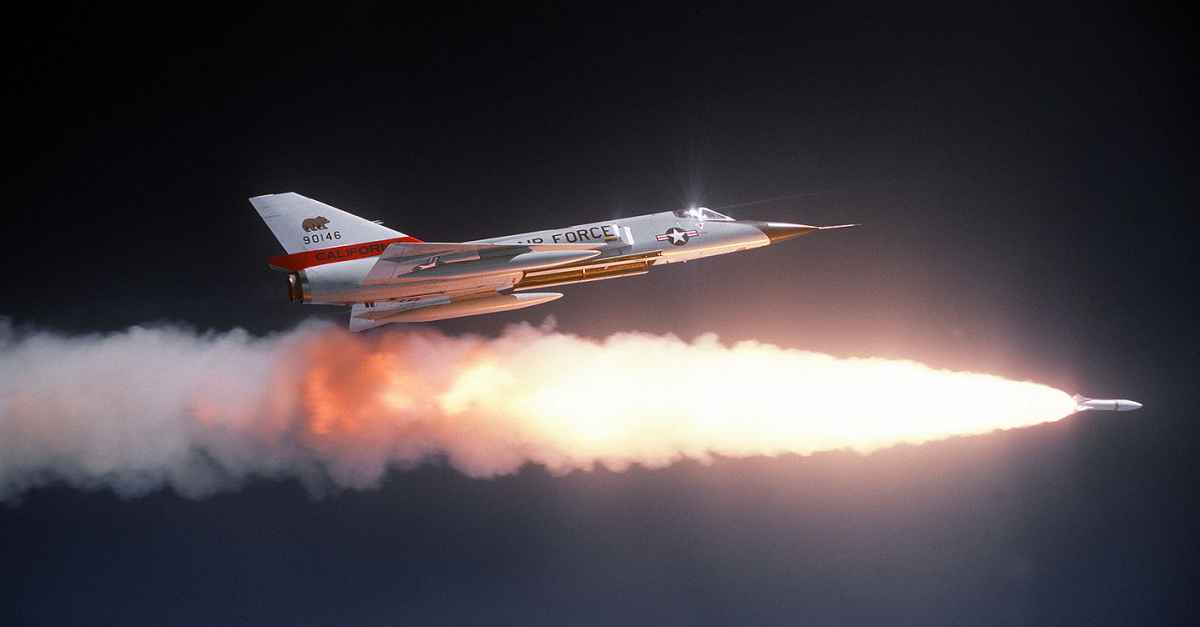
Amongst a litany of first generation fighter jet aircraft, the F-106 proved to be one of the last that would prioritize speed over air-to-air combat visibility. Advancements in radar technology, the ability to carry more missiles, and better pilot visibility made the F-4 Phantom a superior choice. But, when it came to raw speed and maneuverability, the F-106 showed a lot of promise as one of the fastest jets. The Convair F-106 had a brief record of service, never officially saw combat, and would mostly be used to test the envelope of what was capable for fighter-bomber platforms in the late 1950s. In terms of a maximum speed, it definitely held its own at a scorching hot Mach 2.3 record of 1,525 mph. And, it certainly had range – 1,841 miles worth of internal fuel.
- Top Speed: 1,526 mph
- Max Flight Distance: 1,841 miles with internal fuel
Eurofighter Typhoon
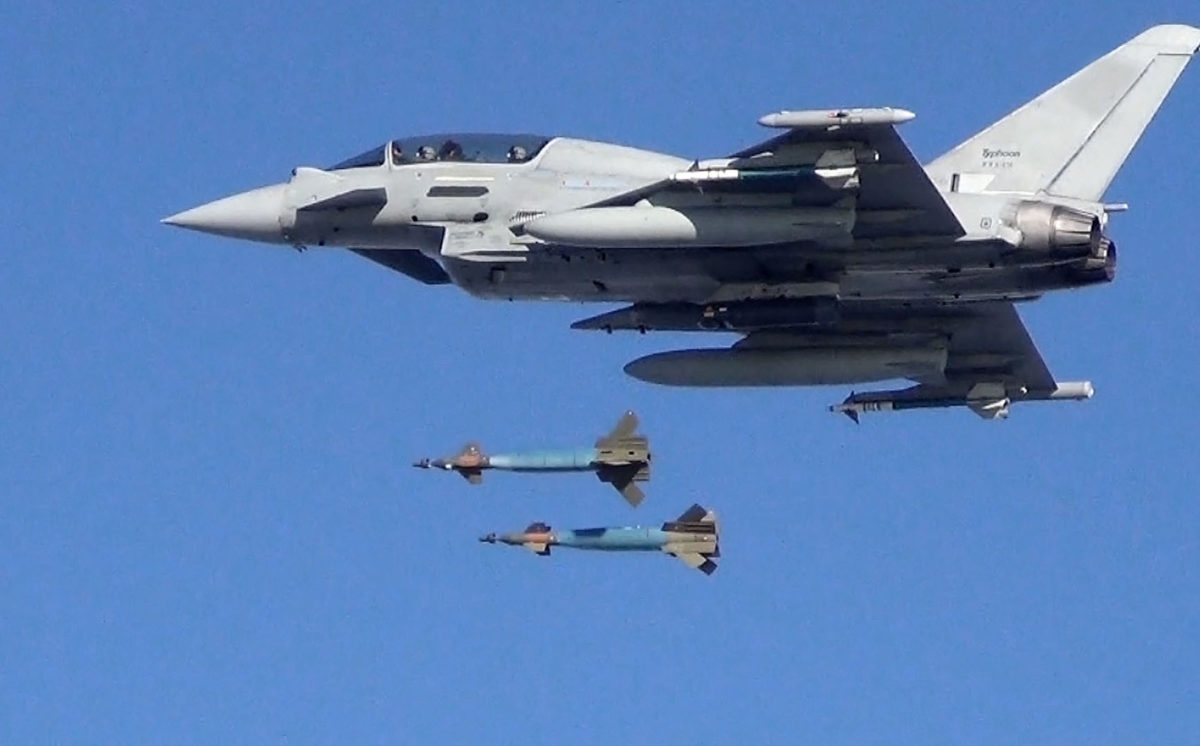
Across Europe, there was a need for an affordable, reliable multirole jet fighter that could be scrambled quickly in response to an escalating emergency. The Eurofighter Typhoon has promised to fill this role and more. Entering service in 1994, it saw its first combat debut in 2011 and is still used by many NATO European allies as a premier interdiction aircraft. The Eurofighter Typhoon is a twin-engine turbojet aircraft capable of sustaining Mach 2 and above. With a service range of 1,800 miles, it’s perfect for patrolling the airways above Europe and the Middle East.
- Top Speed: 1,550 mph
- Max Flight Distance: 1,800 miles with internal fuel
Sukhoi Su-27
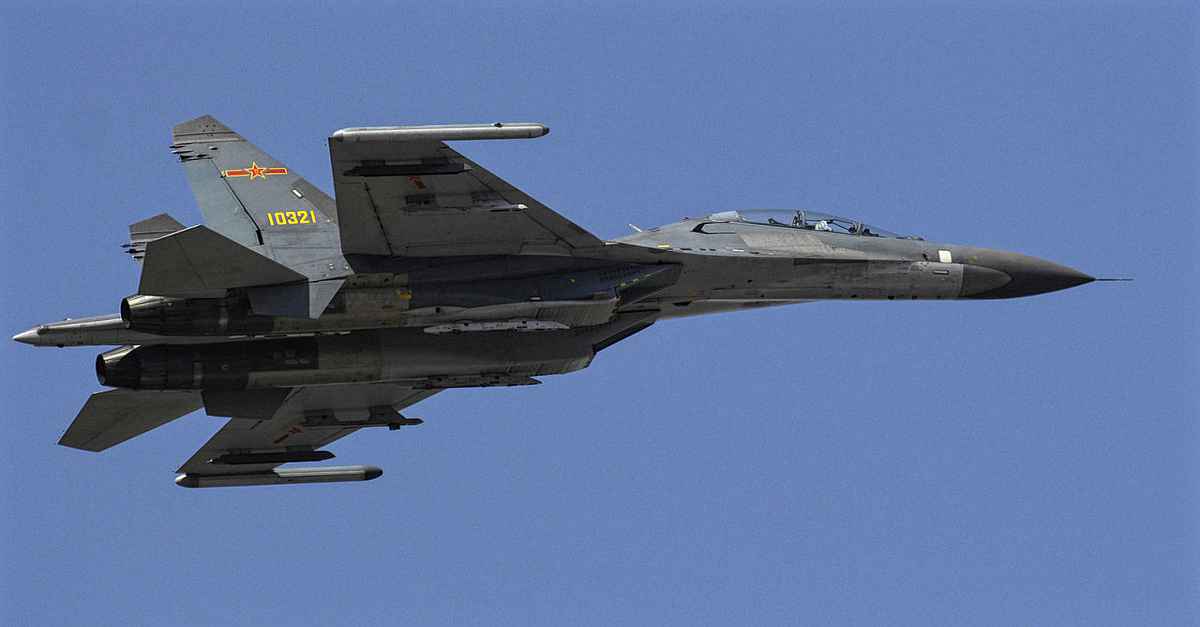
NATO’s greatest contemporary contender for air superiority is the Russian-made Su-27. Between it and the Mikoyan MiG-29, the Flanker was a beautiful antagonist to NATO forces. It’s scheduled to be replaced by a next generation of Sukhoi PAK FA T-50s but it will always hold a coveted role for speed, combat maneuverability, and sophisticated avionics. The Su-27 stands out in the minds of avionics engineers so much that the Chinese officially licensed their own version with the Shenyang J-11, which promises to continue the legacy of modified fourth-generation jet fighters that were as versatile over the sea as land.
- Top Speed: 1,550 mph
- Max Flight Distance: 2,193 miles with internal fuel
F-15 Eagle
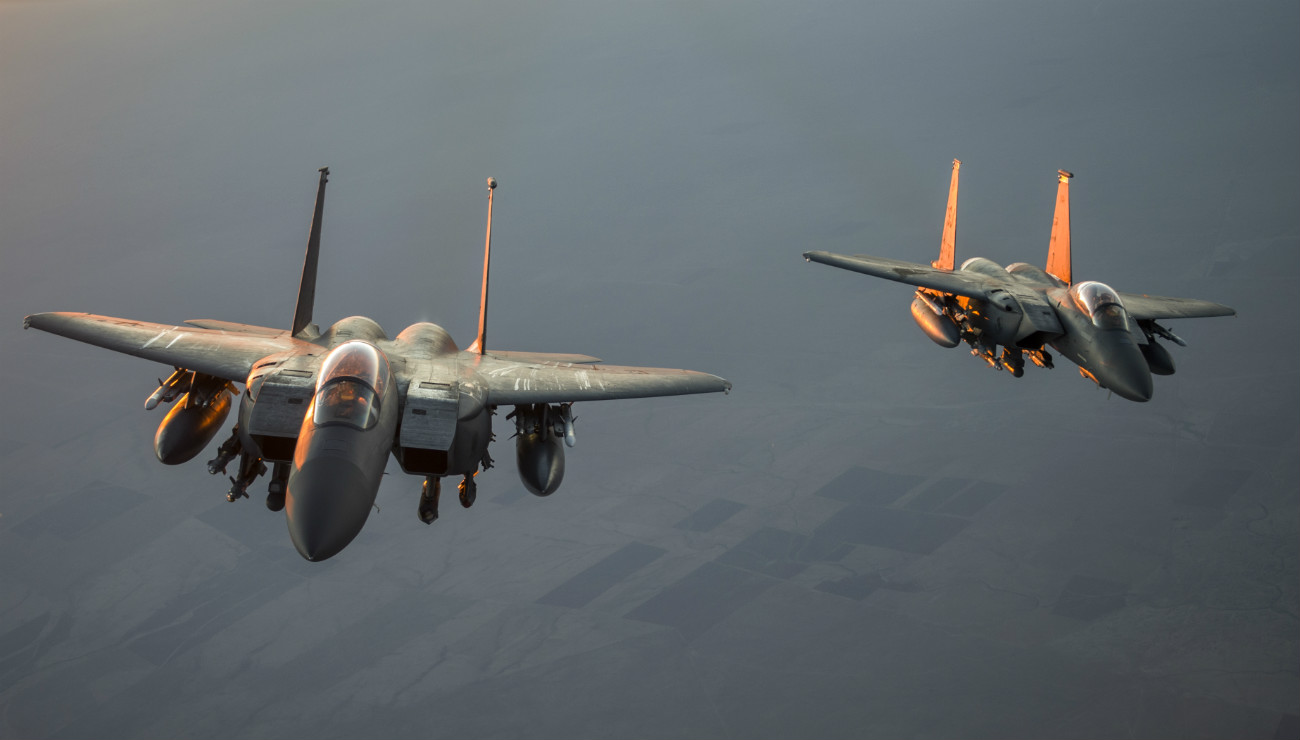
The “Scourge of the Sky” during Operation Desert Storm, the F-15 has been around since the late 1970s but just hadn’t seemed to find an equal match since then. Super fast, this twin-engine fighter-bomber third generation jet aircraft could pull off deft, high-G maneuvers and still have fuel left over to hit all its objectives. At high altitude, it can travel at an amazing Mach 2.5 and still maintain a combat effective range of 1,222 miles.
The F-15 is still available and in service after undergoing major upgrades in 2008 and 2009. This Eagle is far from being grounded even while next gen multirole fighters like the F-35 eye its coveted role in USAF air superiority. In fact, with the F-22 program currently doing loops on the ground, the F-15 is projected to remain in the fleet for quite some time. With precisely zero losses due to enemy air activity, it’s a multirole fighter that has withstood the test of time.
- Top Speed: 1,650 mph
- Max Flight Distance: 1,222 miles or 3,450 miles with external tanks
Mikoyan MiG-31 Foxhound
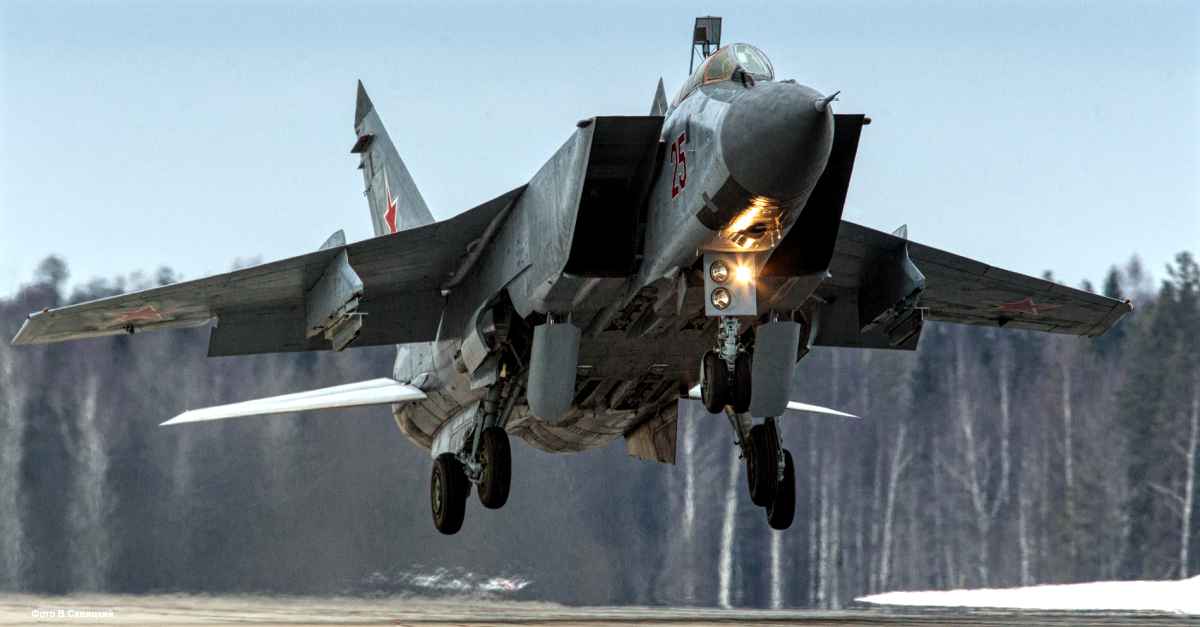
The MiG-31 Foxhound hit new highs in aerospace world records when it smashed a max altitude record of 123,520 feet back in 1977. It also set a new record for time to height – 115,000 feet in 4:11.78 minutes. Consequently, the MiG-31 showed a lot of promise for the Soviet Union for a new generation of fighter jet aircraft. It was also a first generation of aircraft capable of using its radar to detect and intercept stealth aircraft. The Foxhound marked the introduction into a new wave of air superiority contests between the Soviet Union and NATO. It could very quickly get to altitude, sustain a long time in the air, lock onto conventional and stealth air targets, and deliver long-range, radar-guided missiles. This effectively changed the face of the air contest. The Foxhound is still in service by Russia and is expected to remain in the air until 2030.
- Top Speed: 1,860 mph
- Max Flight Distance: 900 miles with internal fuel
Mikoyan Ye-152
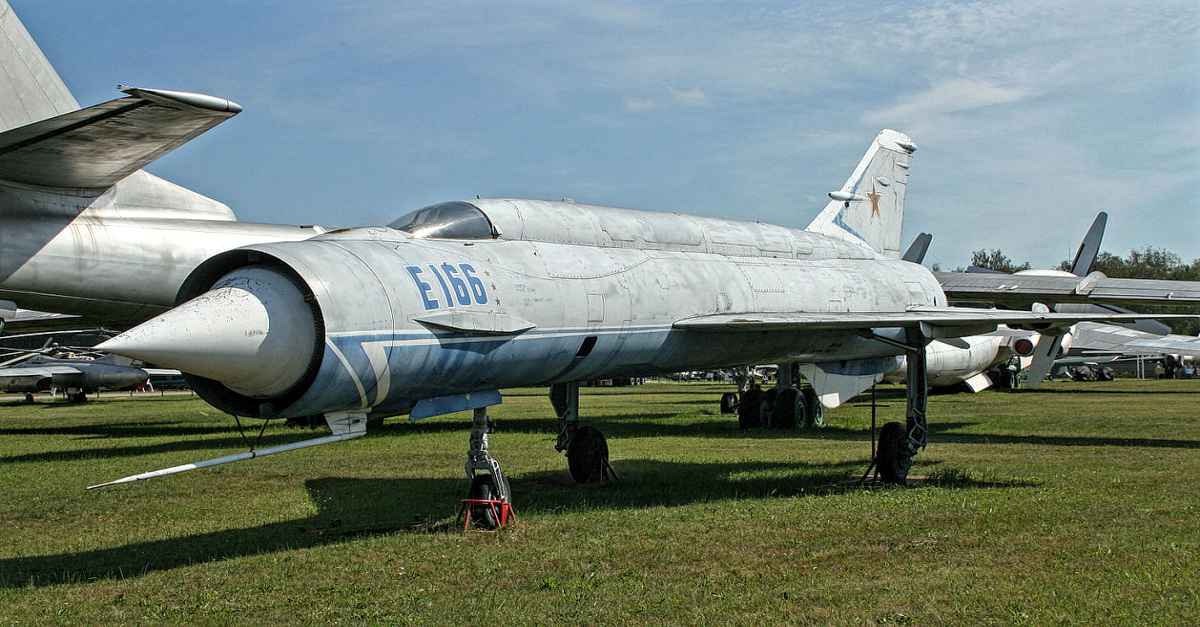
In the dead heat for air speed superiority during the Cold War, the Soviet Union developed two single-engine test fighters. Their purpose was to see how far they could push their own envelope when it came to world records. The game, back then, was to see who could get there first, drop a payload, and scurry out. The Ye-152 seemed like a promising chance for the Soviet Union to catch up to fighter craft like the F-100, F-101, and the F-106. But the Ye-152 turned out to be little more than a good show. With a maximum achieved speed of Mach 2.8+, it definitely had pure velocity in its corner.
However, with engine reliability and combat viability both proverbially up in the air, the Ye-152 went no further than simply making the world record charts for fastest jets in 1959. The Soviet Union would eventually figure out that in the Ye-150 family, two engines may be better than one. The Ye-152A used a much more reliable R-11 twin turbojet design, which enabled it to withstand the stresses of sustained supersonic flight much better. Unfortunately, this test craft was terminated after it crashed in 1965.
- Top Speed: 1,883 mph
- Max Flight Distance: 913 miles
North American XB-70 Valkyrie
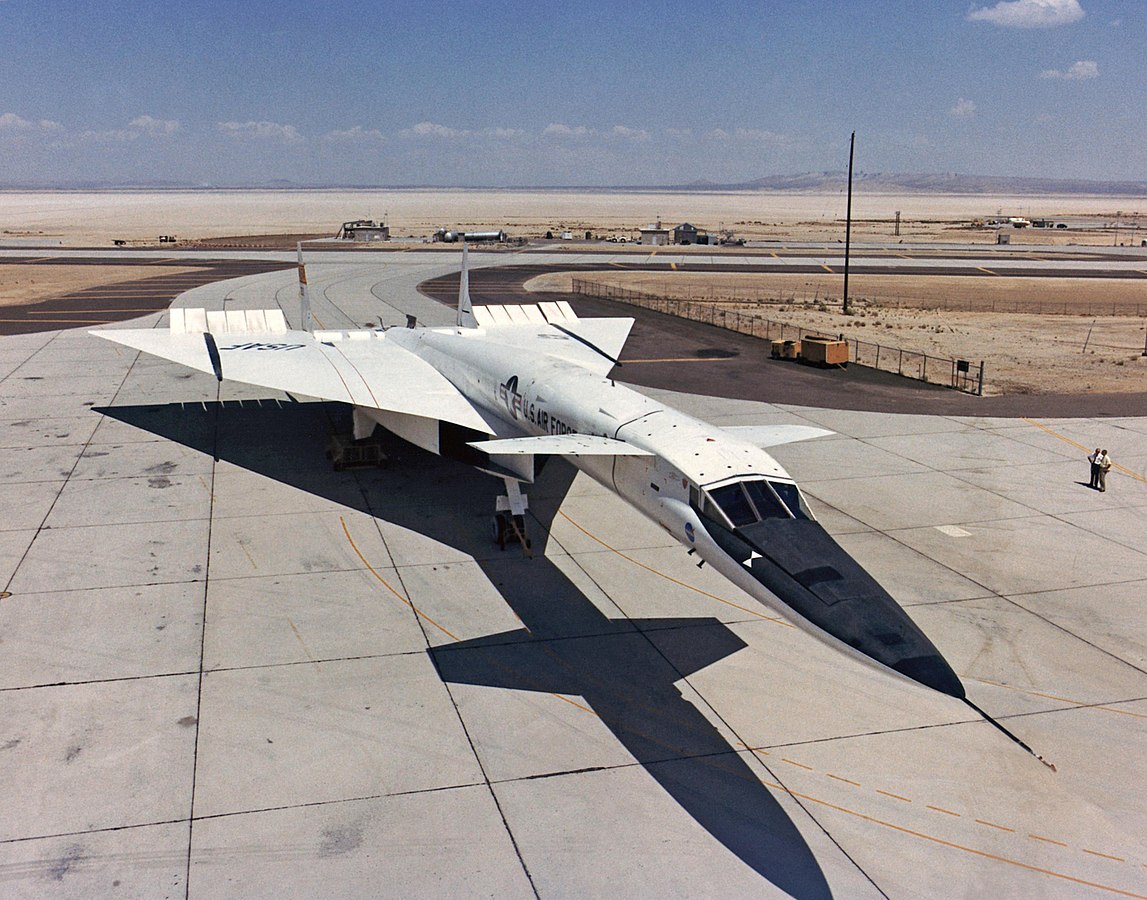
The XB-70 Valkyrie is an impressive military aircraft whose legacy would wind up being something totally different than what it set out to accomplish. The Valkyrie was originally built to be the baddest manned strategic bomber ever known. It was an exciting concept with a planned cruise speed of Mach 3 at altitudes of around 70,000 feet. The design not only looked cool, the wing structure is what theoretically would make the aircraft preform so well. All the while, there was another aviation arena garnering a lot of attention known as supersonic transport. It just so happened that the size and material of the XB-70 Valkyrie was ideal for testing SST. Thus its purpose was then officially changed from manned bomber to research aircraft. It’s early test flights provided a lot of valuable information for SST designers, including aircraft noise and the reliability of wind tunnel predictions versus actual flight findings. Unfortunately, there were two casualties during the testing of this aircraft, which complicated the program. It remains one of the most valuable research planes ever made.
- Top Speed: 2,050 mph
- Max Flight Distance: 3,725 miles on internal fuel
The MiG-25 Foxbat
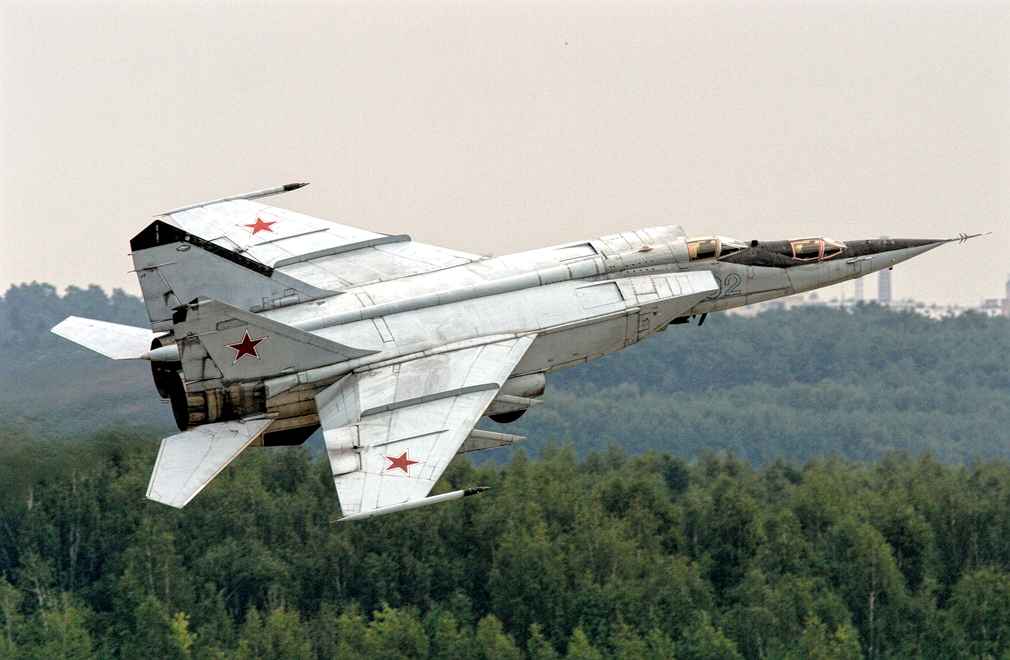
Right as the F-4 Phantom II was just getting its proverbial wings underneath it, the Soviet Union had its own competitor to air superiority in mind: the MiG-25 Foxbat. It was designed as a pure speed, super-maneuverable supersonic interceptor. When it hit the skies in 1964, NATO allies didn’t even know what hit them. The F-4 Phantom II was the latest the Air Force had for air superiority aircraft and it was literally toe-to-toe with these new MiG-25s over Northern Vietnam. As a testament to great engineering at an affordable price, there are still MiG-25s in service even though many of them were upgraded into the MiG-31. In terms of competition for speed in the air, the only aircraft that had the Foxbat licked was the SR-71 Blackbird – a coveted reconnaissance asset during the 1970s and 80s.
- Top Speed: 2,170 mph
- Max Flight Distance: 1,075 miles on internal fuel
The Lockheed YF-12
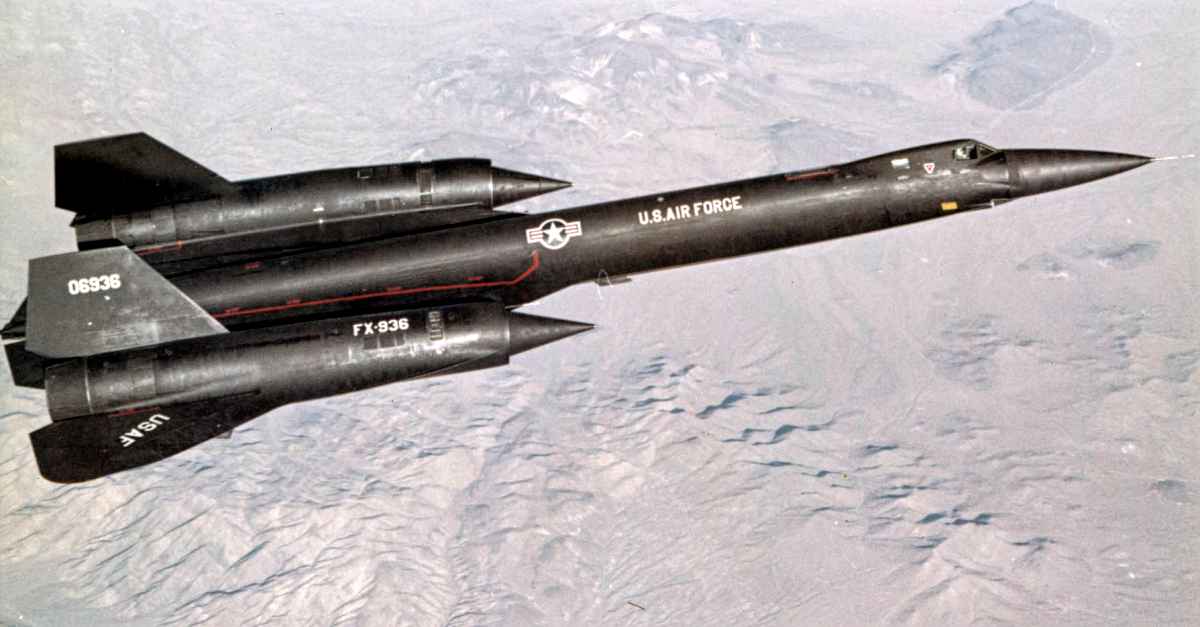
If seeing a picture of the YF-12 elicits feelings of deja vu, you’re not alone. This was the experimental Lockheed Martin aircraft that would go on to influence the design of the highly successful and versatile SR-71 Blackbird. Designed back in the early 60s, it proved to be an “out of the box” platform that absolutely smashed all previously held records for flight speed. Shrouded in secrecy, many people forget that the origins of this program were the very first for actual stealth technology. Capable of high altitude missions at an incredible Mach 3.35 speed, this supersonic jet fighter was meant to bring futuristic sci-fi capabilities to the contemporary present. Though the program was defunded, Lockheed would take all the lessons learned from its brief lifespan to influence the production of the SR-71. The SR-71 would go on to serve quite famously as a high altitude reconnaissance aircraft.
-
- Top Speed: 2,275 mph
- Max Flight Distance: 3,000 miles
SR-71 Blackbird
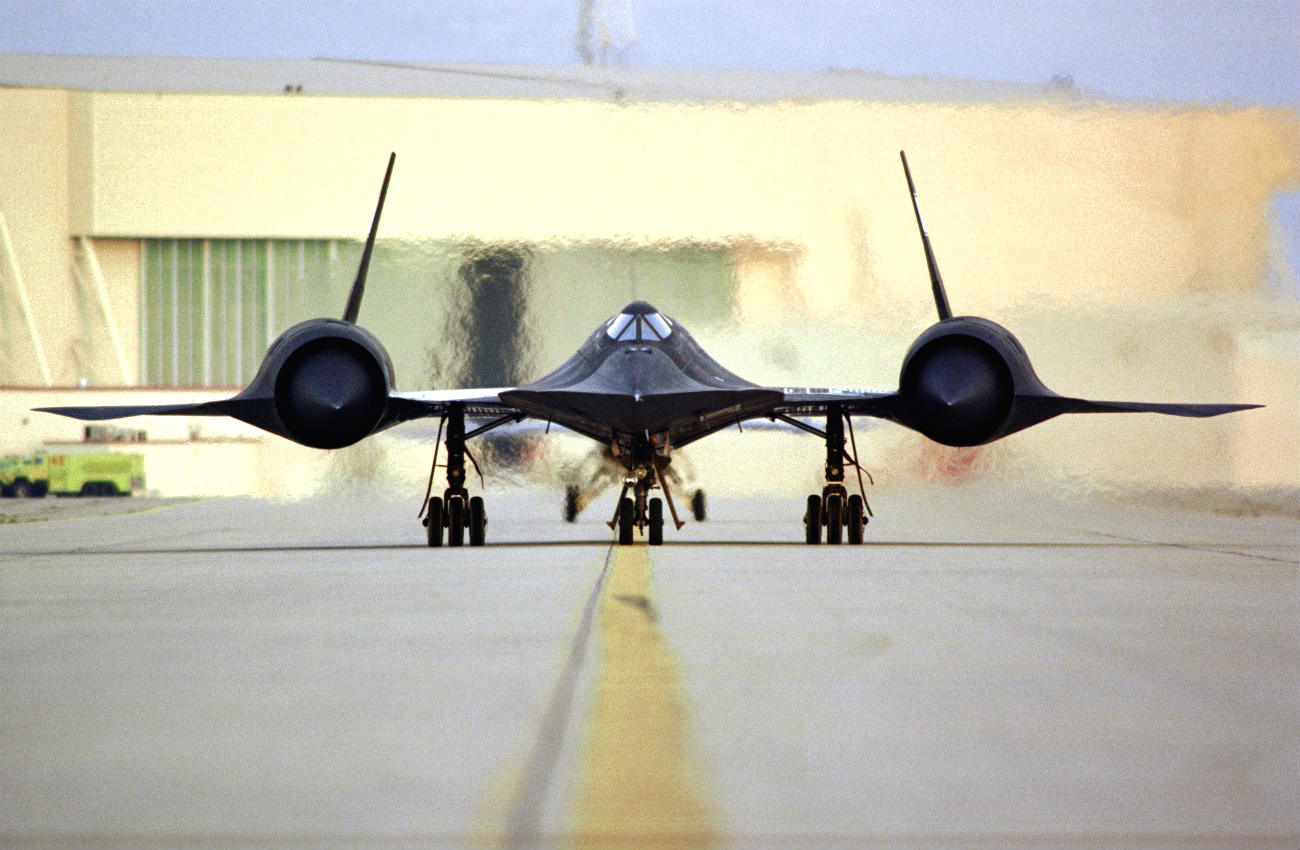
Lockheed Martin broke the mold when it created this space-age, high-altitude stealth aircraft. Originally developed under the YF-12 interceptor program, the SR-71 Blackbird absolutely smashed world records for air speed time and time again. As a reconnaissance aircraft with no communications uplink, it had a very limited role in strategic surveillance. But it really bloomed in the hearts and minds of aerospace enthusiasts. Crushing a maximum speed record of 2,500 mph, the SR-71 Blackbird could skirt the very edge of the atmosphere at 85,000 feet. Awarded multiple distinctions for achievements in aeronautic design, performance, and versatility, this stealth aircraft could barely be seen and never hit. The Soviet MiG-25 Foxbat was the only aircraft in service that could approach catching up to the SR-71 and even it had a very difficult time trailing behind this legendary stealth aircraft.
-
- Top Speed: 2,500 mph
- Max Flight Distance: 3,337 miles on internal fuel
Boeing X-51 Scramjet
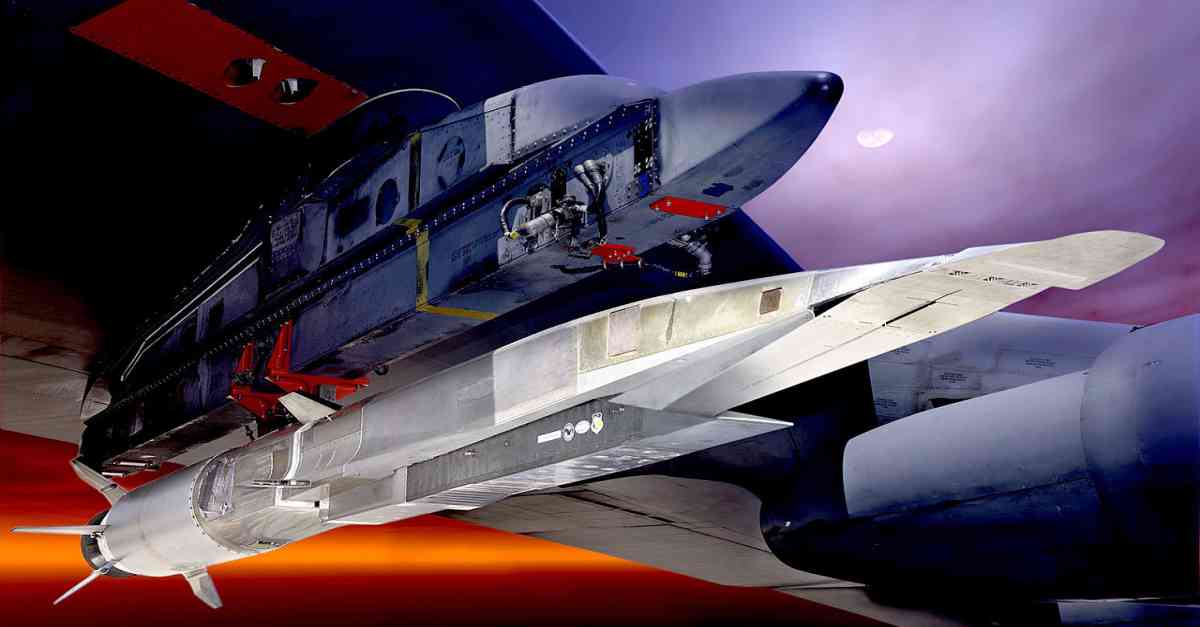
The advantage of modern technology is not having to risk an actual pilot’s life to test the utter barriers of new scramjet Wave Rider technology. The Wave Rider is the lovechild of DARPA, the United States Air Force, and several other bleeding edge aeronautic programs. It’s an unmanned aerial craft meant to be deployed in air, much like how the North American X-15 was deployed from the back of a B-52 Stratofortress.
The X-51 is much smaller because, unlike the X-15, it doesn’t have to support a human pilot. Capable of recorded speeds above the Mach 5 mark, this highly experimental craft is designed to be pushed into service around 2030 – where it will ideally serve as a platform for a fast-attack missile. With a range of 460 miles, a B-52 Stratofortress just needs to get within a 500 mile range of target before it could deploy the X-51 and then safely return back to base.
- Top Speed: 3,900 mph
- Max Flight Distance: 460 miles
The X-43
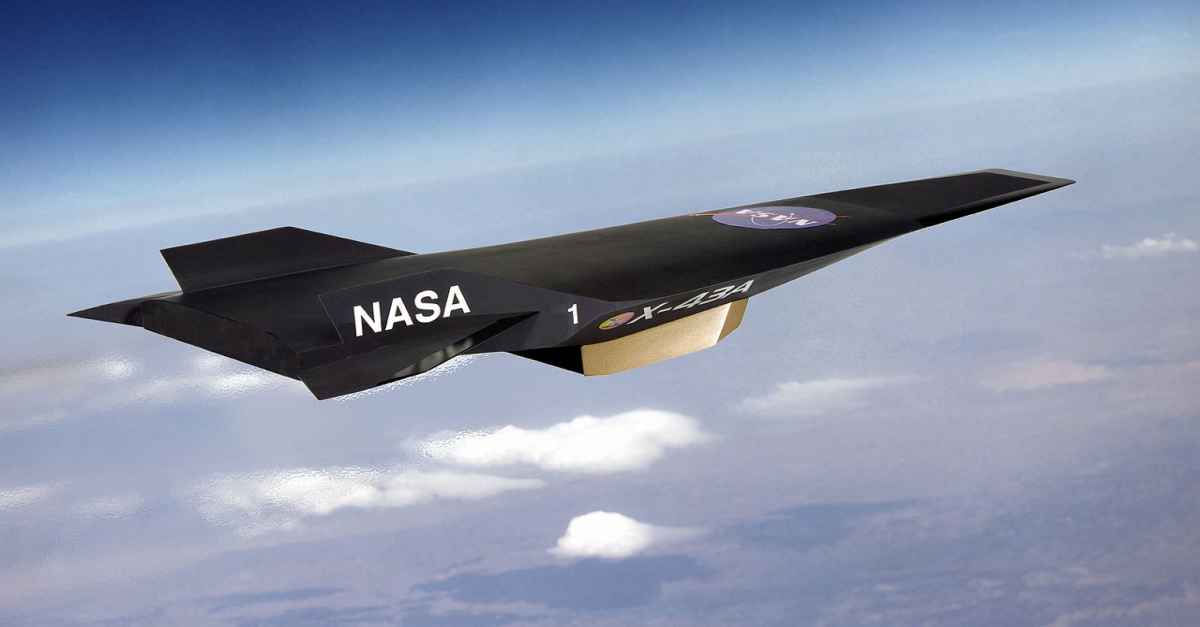
Furthering the pursuits of space travel, NASA has breached the limits of what is currently the fastest recorded air travel with the fastest jet. The X-43 breached the Mach 9.6 barrier in an unmanned flight. High velocity travel was possible by using a booster rocket to get to the right speed and altitude. Cutting-edge scramjet technology takes over from there. The X-43 program has come under a lot of scrutiny in terms of design and expenditure but it has ultimately solved the question of “how fast?” As with all experimental “X” designators, the X-43 is designed to push the limits further than previous testing has allowed. Scramjet technology began development in the 1950s, but there is still a lot to be learned.
- Top Speed: 6,598 mph





